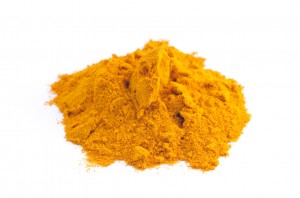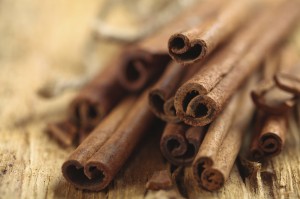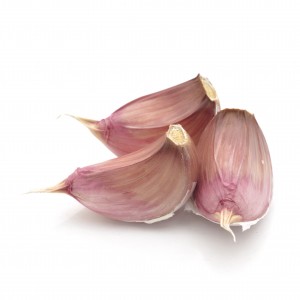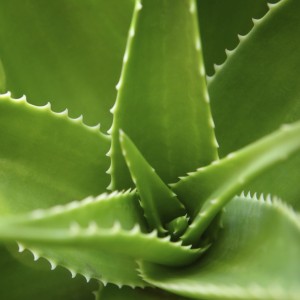Five Must Have Spices for Your Pantry & Health | by

Spices do more than flavor food – many also have healing properties that fight against disease.
“A lot of herbs and spices have crossover use for food and health,” says Jessica Crandall, a Registered Dietitian and Certified Diabetes Educator with Denver Wellness and Nutrition in Englewood, Colo. “They can increase the flavor of food and decrease health concerns as we age – bite by bite.”
Although many people use the terms herbs and spices interchangeably, there are technical differences between the two. For culinary purposes, “herbs” are generally understood to be the leaves and soft stems of plants used either fresh or dried, whereas “spices” are derived from other parts of plants – the seeds, flowers, root, bark and woody stems. Spices are generally more concentrated in taste than herbs.
Both herbs and spices can increase flavor and can be used to reduce the amount of fat, sugar and salt used to season dishes, according to Crandall and Tracy Boykin, a Registered Dietician and Nutritionist with the Clinical Nutrition Center in Denver, Colo.
“They are inexpensive, easy to use, taste good and work synergistically to improve our health,” says Karen Quinn, a Certified Ayurvedic Practitioner and Certified Yoga Therapist with Feel Better Yoga. She advises patients at Progressive Health Center in Denver, Colo. about alternative health care, including how to use herbs and spices for optimum health and balance.
The list of five spices that follows is a compilation of top recommendations by these health professionals. They range from the exotic to common and include plant roots to pulp, but all can be found at your health food store and nowadays at your local grocery store.
No. 1: Turmeric
“Turmeric is the king of herbs and spices,” says Boykin. Also referred to as “tumeric,” the golden spice is derived from a root related to ginger. Its flavor is sharp and tart with peppery undertones. Its anticarcinogenic properties (cancer fighting) put it at the top of this list of must haves in your spice rack by all three health professionals interviewed for this article.
Turmeric contains curcumin, a compound with antioxidant properties that helps decrease inflammation, which can play a role in the development of cancer. Quinn agrees, “Turmeric is one of the most important herbs and spices used in Ayurvedic medicine and the most highly researched herb in the world.” Turmeric is native to South Asia, particularly India, where it has been used for centuries for its medicinal properties, especially as a component of Ayurvedic medicine where it is also valued because of its antibiotic, analgesic, and antiallergenic properties. In India, Indonesia and Malaysia, turmeric is widely consumed in curries but also used topically for mosquito bites, cuts, skin spots, and mixed with salt water as a gargle.
How to use: Turmeric is more readily available in the U.S. You can find it at health-food markets, but for larger and cheaper quantities purchase it at Asian and East Indian markets. Quinn suggests bypassing the root and using the powder form, about one-half to one teaspoon per day. Use it in curries, potatoes, lentils, cauliflower and rice. The effectiveness of its healing properties are increased when it is mixed with black pepper.
Caution: It gives a yellow hue to food and other things it comes in contact with – like fingers and dishes. You can also increase consumption by taking it in capsule form (about 500 mg capsule per day).
No. 2: Ginger
Ginger is one of the most popular spices around the world. This superfood not only adds a spicy zing to foods and drinks, it is used to aid digestion and decrease nausea says Crandall. The knobby root has a peppery and slightly citrus flavor.
“Ginger is known as the herbalist’s best friend,” says Quinn. “It destroys toxins and helps with everything from nausea to hiccups to alleviating coughs and colds.” Ginger comes from the Sanskrit word for “horn root” – a reference to its bumpy appearance.
How to use: Use fresh ginger root instead of ginger powder. Select plump, smooth-skinned pieces. Grate or chop fresh ginger into soups and sauces or make a fresh ginger tea to sooth the lungs during cold and flu season (see recipe).
Caution: Ginger, like some herbs and spices, if consumed in large quantities can reduce the effectiveness or interfere with some medications; consult your physician before significantly increasing your intake.
No. 3: Cinnamon
Your favorite warming spice can help reduce blood sugar levels, as well as cholesterol. “This common house-hold spice has phytonutrients that are good for anti-inflamation,” says Crandall. In some research, cinnamon has been shown to help stabilize blood sugar levels and total cholesterol levels for those with Type 2 diabetes. In the U.S., cinnamon is primarily used in sweet preparations but in other cuisines it often flavors savory dishes. In Chinese cuisine, it is one of the ingredients in Chinese five-spice powder.
How to use: Add a half teaspoon of ground cinnamon per day to coffee, oatmeal, yogurt, sweet and savory dishes.
Caution: women with liver problems or taking medications for the liver should consult their physician before significantly increasing cinnamon intake.
No. 4: Garlic
Since ancient times, garlic has been valued for its healing properties. According to The Prescription for Nutritional Healing by Phyllis A. Balch, a well-regarded guide to natural health, pyramid builders supposedly ate garlic to increase their endurance and strength. This flavor booster in its raw form (versus powdered) is excellent for treating colds and lethargy, easing eliminations and abdominal pains, removing toxins, and fighting infections, says Quinn.
How to use: Use fresh garlic in recipes instead of powdered or granulated garlic.
Caution: For those with high blood pressure, ulcers, skin conditions or taking blood thinners, do not eat a lot of garlic and avoid excessive amounts before surgery.
No. 5: Aloe Vera
Aloe vera may be a surprise to this list but it is one item two of these health professionals recommend aging women have at the ready. “Aloe helps calm the stomach. It has an anti-inflammatory effect for people with ulcerative colitis and also helps lubricate joints and decrease joint pain,” says Crandall. Aloe is also cooling and good for women with menopausal symptoms says Quinn.
Aloe vera juice is the pulp from the inside of the plant’s succulent leaves. Aloe vera is used as a skin healer, moisturizer and softener – good for burns, cuts, skin problems and insect stings. But, when taken internally, pure aloe vera juice aides a variety of stomach disorders, according to Balch.
How to use: Drink one-quarter to one-half cup per day with water.
Caution: Don’t over do it, because aloe vera can have a mild laxative effect. Pregnant women should also avoid it.
Honorable Mentions
These health professionals also recommended the following culinary spices and herbs: fennel, cumin, coriander, lemon grass, nutmeg, green tea, flax seeds, cayenne, oregano, and chia seeds.
If you are not doing so already, add these healthy spices to your pantry and diet. “One of the advantages of spices and herbs is that they are as nature provided them,” says Quinn.
Tags: aloe vera, cinnamon, Englewood, garlic, ginger, healthy, herbs and spices, Swedish, Turmeric
Leave a Comment
Please be respectful while leaving comments. All comments are subject to removal by the moderator.





